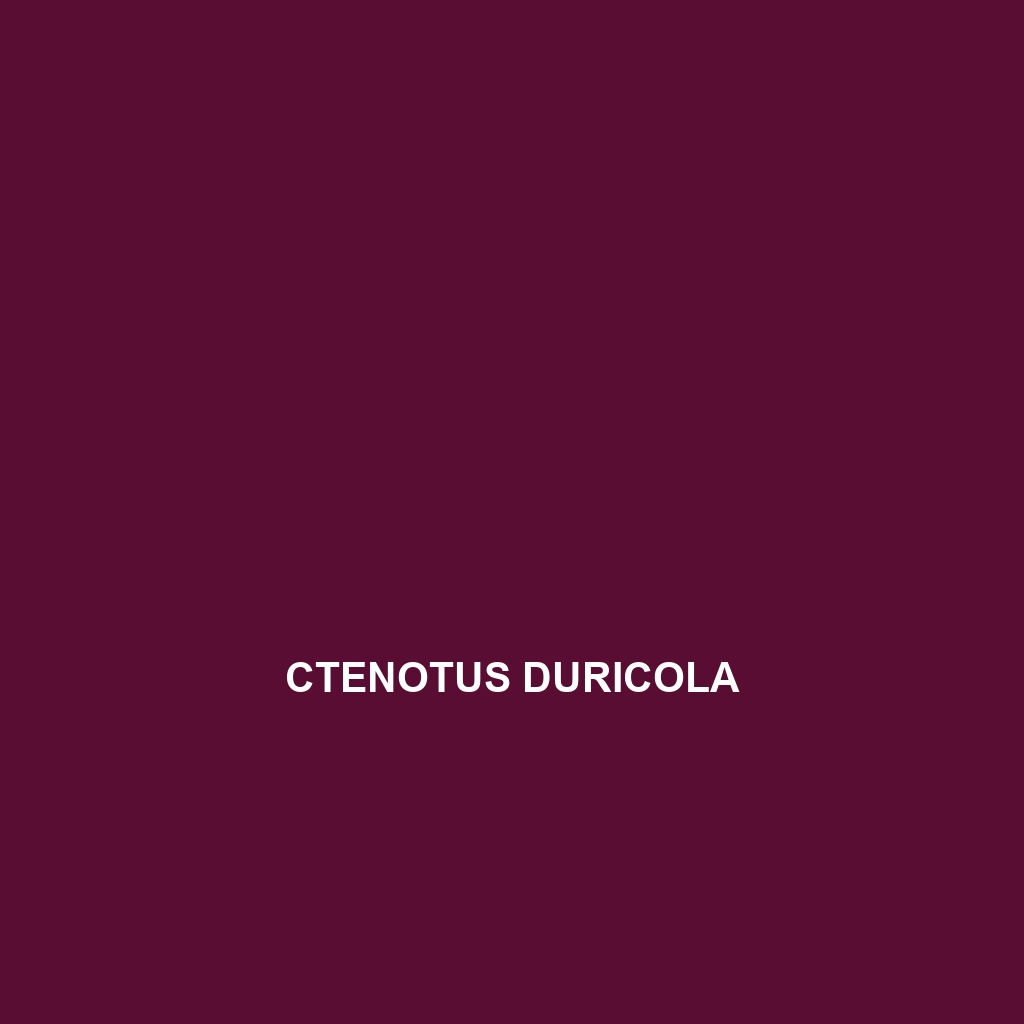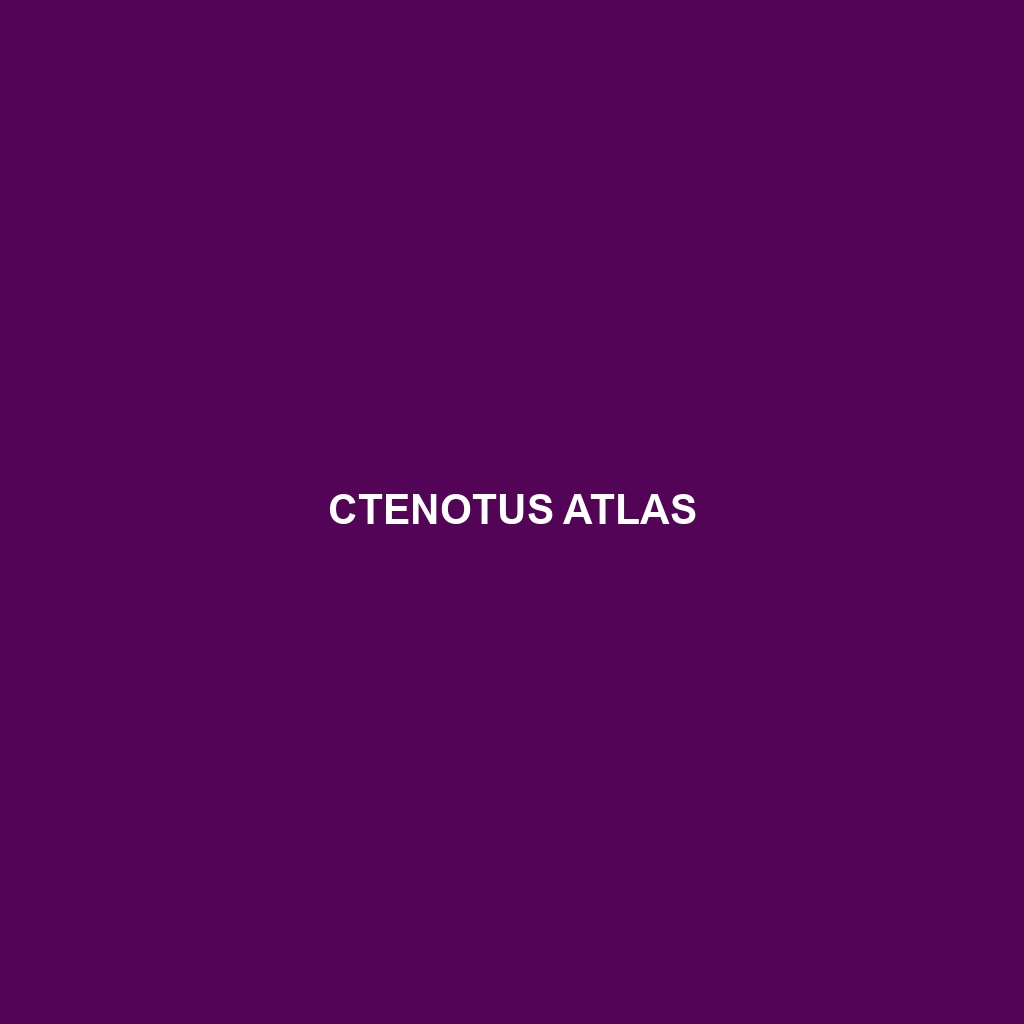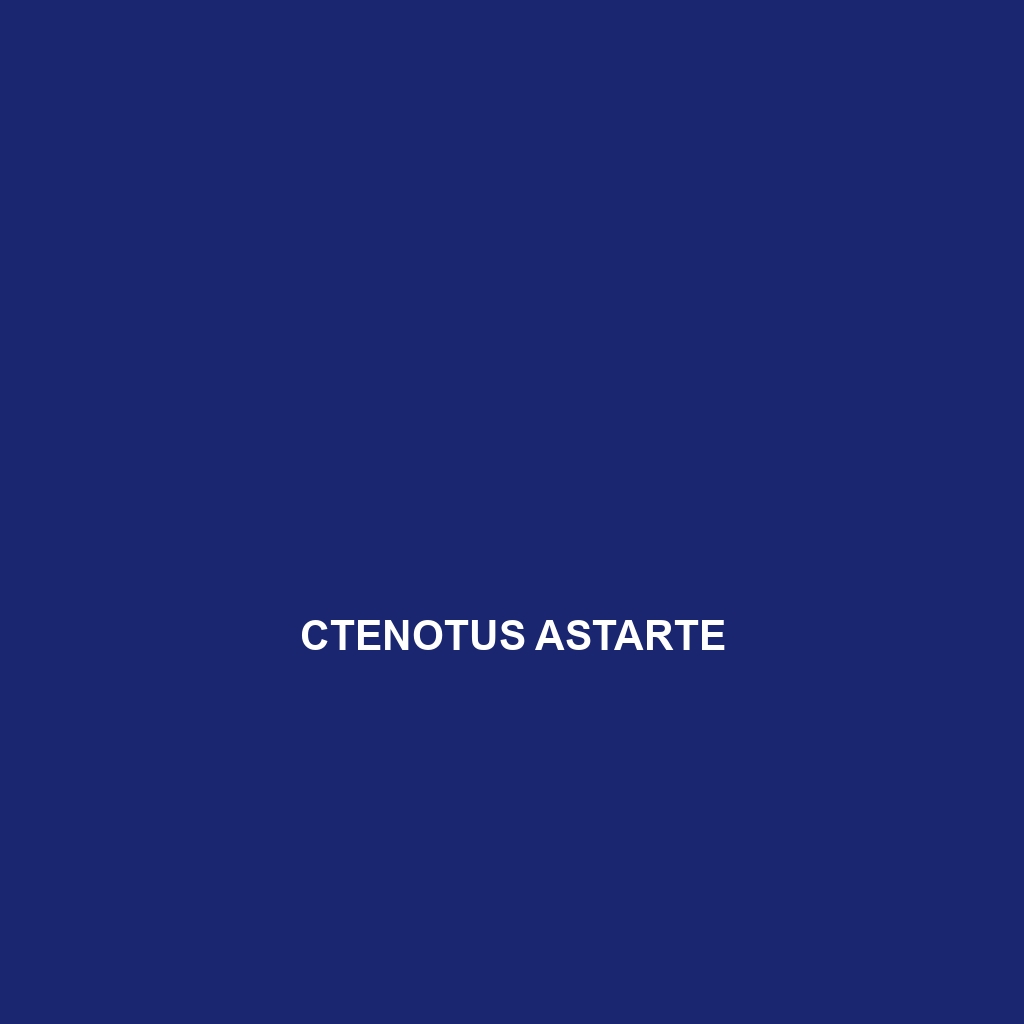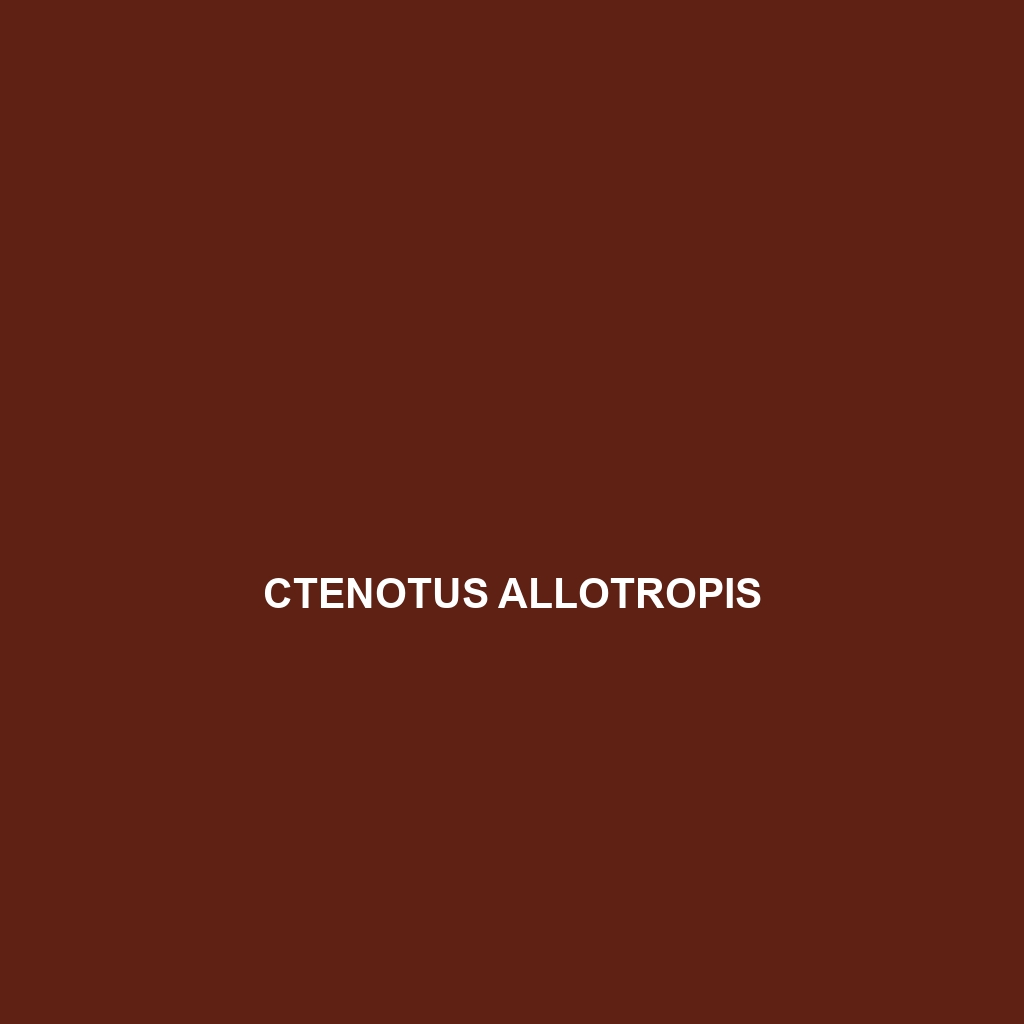Ctenotus essingtonii, commonly known as the Essington Skink, is a medium-sized lizard found in northern Australia's arid regions, characterized by its slender body, vibrant yellow or orange stripes, and diurnal behavior. This resilient species primarily feeds on insects and plays a critical role in its ecosystem as both predator and prey.
Tag: Australian skinks
Ctenotus duricola
Discover the Ctenotus duricola, or durable ctenotus, a medium-sized skink native to central Australia's arid regions, characterized by its adaptability, distinctive coloration, and diet mainly consisting of insects. This agile reptile plays a crucial role in its ecosystem by regulating insect populations and serving as prey for larger predators.</p>
Ctenotus coggeri
Introducing the Ctenotus coggeri, also known as Cogger's skink, a medium-sized skink found in arid regions of Australia, known for its distinctive light brown to grey coloration and diurnal behavior. This agile predator plays a vital role in its ecosystem by controlling insect populations and is recognized for its remarkable adaptability to harsh environmental conditions.
Ctenotus colletti
Ctenotus colletti, or Collett's skink, is a medium-sized skink native to Australia's arid regions, characterized by its elongated body, smooth scales, and distinctive dark brown or grayish-brown coloration with pale stripes. This agile, diurnal species primarily feeds on insects and plays a crucial role in its ecosystem by helping maintain insect populations while serving as prey for larger predators.
Ctenotus calurus
Discover the Yellow-Footed Ctenotus (Ctenotus calurus), a medium-sized Australian skink known for its distinctive yellow or orange feet and smooth, striped body. Found in arid habitats, this agile predator primarily feeds on insects and plays a critical role in maintaining ecological balance.
Ctenotus brooksi
Ctenotus brooksi, commonly known as Brook's Ctenotus, is a medium-sized skink native to arid regions of southern Australia, thriving in open woodlands and grasslands. This agile, insectivorous species showcases sandy-brown to greyish coloration with distinctive stripes, plays a crucial ecological role by controlling insect populations, and exhibits remarkable adaptability to varying environmental conditions.
Ctenotus atlas
The Ctenotus atlas, also known as the Centralian Ctenotus, is a medium-sized skink native to arid regions of central and western Australia, characterized by its elongated body, sandy to light brown coloration with dark stripes, and large eyes. This diurnal species plays a crucial role in its ecosystem by controlling insect populations and serves as a vital food source for larger predators.
Ctenotus astarte
Discover the Ctenotus astarte, a medium-sized skink native to southeastern Australia, known for its vibrant coloration and distinctive striped pattern. Thriving in open woodlands and grasslands, this diurnal species plays a vital role in its ecosystem by controlling insect populations and serving as prey for larger animals.
Ctenotus angusticeps
Discover the Ctenotus angusticeps, a slender skink native to Australia's arid regions, characterized by its light brown to grey coloration with dark stripes and a diet primarily consisting of small insects. This diurnal reptile plays a vital role in its ecosystem by controlling insect populations and serves as prey for larger animals, making it a fascinating species for wildlife enthusiasts.
Ctenotus allotropis
Discover the allotropis skink (Ctenotus allotropis), a slender and agile lizard native to eastern Australia, thriving in dry woodlands and sandy soils. Characterized by its distinctive brown and gray patterns, this diurnal species primarily feeds on small invertebrates and plays a vital role in maintaining ecological balance.








